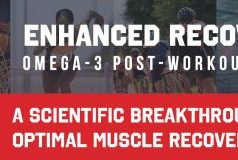How much time do you spend pouring over pace splits and distance totals? Does the average pace on your watch determine the success of your workout?
We are becoming increasingly less responsive as runners, getting bogged down in paces, targets, and segments when really we should be thinking about how our training is affecting our bodies. Great British runners of the 70’s and 80’s weren’t restricted by predefined paces, heart rate zones or cadence counters- they just went out and ran by feel.
That’s hard to do without an understanding of the specific benefits of each session, and how each one should feel. Generally speaking a good training regime should touch on 5 areas or training types providing specific physiological benefits. To make the most of your running potential you can’t ignore any pieces of the jigsaw.
A good training plan may be more nuanced, using a combination of systems in the same session, but it doesn’t have to be that complicated. Here’s a brief description of each area.
Long Steady Runs | Aerobic Conditioning Training
Benefit: General Body Strength. Effort: up to 60% effort.
This will probably make up the majority of your running diet. We need this to build general running strength, particularly in the joints and tendons, and to improve our ability to take in, transport and use oxygen efficiently. Think of this as the base of your running trifle. You can’t have the fancy stuff without it.
Threshold Runs | Anaerobic Conditioning Training
Benefit: Heart strength. Effort: 65-75%
Peter Coe defines these sessions involve efforts of 8mins+ at a pace where you just start to struggle to take in enough oxygen to sustain the pace comfortably. Experienced runners may be more nuanced, dividing these longer sustained paced runs into tempo, threshold or, even Marathon pace workouts. But, to keep it simple your goal is to run at a pace where it’s a challenge to maintain a steady supply of oxygenated blood to the body and prevent an increase in production of anaerobic energy. Hence threshold; the point at which lactic acid may start to accumulate if pace increases. Training in this area forces the heart to up it’s game, pumping fresh oxygenated blood in greater quantities and raising your threshold.
Aerobic Capacity Interval Training
Benefit: Lung capacity. Effort: 75-80%
Coe describes these as ‘intervals of 2-6mins in duration with full recovery between each’. A fairly typical track or interval sessions for a 5-10k runner comes under this bracket. Many runners would attempt to run these at their goal race pace but once in a while it’s worth considering their primary physiological benefit: improving aerobic capacity; your ability to take on and use large volumes of oxygen in energy production.
Try and run some intervals off the track based on time, running at your ‘maximum comfortable range of breathing’. Make sure you’re working hard but breathing is rhythmical. If you lose control you’re pushing too hard! Rests between each interval is usually enough to recover breath but often get shorter as the season progresses and your fitness improves.
Anaerobic Capacity
Benefit: Lactic tolerance (speed) Effort: 85%
These type of session would traditionally be thought of as more middle distance training (800-1500) but also include hard hill sprints or short hard sessions where you start to feel the burn! The sessions might not seem important for a Marathon runner but you would do well to touch on this zone at some point in your training.
Training at this pace improves basic speed, and blood buffering capability- leaving you better able to tolerate, remove and reprocess lactic acid buffer. A handy skill in racing at any distance.
Neuromuscular Training
Benefit: Brain-muscle communication. Effort: 85% plus
This is a type of session we should all do a lot more of. It involves very short sprint efforts, like strides. Ethiopian runners sprint or stride every single day and the benefits are obvious, with their smooth efficient running style a beacon for us all.
Strides are very important- improving the pathways between brain and muscles and increasing the efficiency of this communication. You shouldn’t be in a fatigued state and you definitely shouldn’t push too hard during each of the sprints- you won’t see Usain Bolt gurning when he’s at his best. Think smooth, fast efficient movement.
So have a think about your training- could you take things back to basics? Exploring different effort levels and breathing patterns could make things more interesting, and it might even help you unlock your inner potential.






